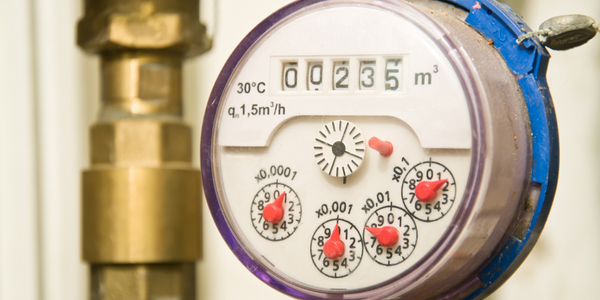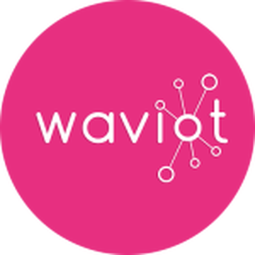
Technology Category
- Analytics & Modeling - Big Data Analytics
- Networks & Connectivity - Gateways
- Sensors - Utility Meters
Applicable Industries
- Utilities
Applicable Functions
- Facility Management
Use Cases
- Water Utility Management
About The Customer
Utility management company
The Challenge
Utility management company was looking for a single complete solution that would allow them to manage all services at once with a universal one-gate solution. Looking for such it was decided to deploy an automated resource management system for smart water metering and then expand it to gas and heating AMI step-by-step.
Utility management companies are facing several serious challenges for correct consumption statistics and billing:
- Manual data provision by customers is often incomplete.
- Utility agents collect meter readings sporadically and there is no proof check available.
- Residents are not motivated with accurate accounting which means they do not track consumption properly.
- There are no clear reasons of dis-balance between amounts of resource supplied and consumed. In some cases, it can reach up to 30% ensuring a residential management company budget loss.
- The utility company has no other way but process meter readings manually wasting several days every month for more or less accurate accounting.
- Undetected on time, for example, water leaks worsen this situation and brings a lot of damage to the property.
The Solution
WAVIoT network has been deployed in the area of 36 apartment houses which is operated by a local utility management company. Residential apartment houses involved in this project are spread on the territory of 140 square kilometers with an unfriendly urban environment. For reference purposes, one of the 22-floor houses with more than 600 apartments is pictured below.
WAVIoT gateways with 3 × 120 Deg 16 dBi sector antennas has been mounted on top of the nearby building for superior range and sensitivity. A total number of gateways required to provide a full coverage for an average 1 million population city amounts to 6-9 units on average depending on the topology characteristics.
At a first stage, more than 15 000 WAVIoT smart water meters have been installed in the water stand-pipe location. Absolutely standard off the shelve equipment provides outstanding communication link budget due to high penetration characteristics of the WAVIoT’s NB-Fi signal.
Summarizing our use case experience we normally see most of our nodes demonstrating 5-20 km in the urban environment. The maximum distance exceeds 25 kilometers as shown in the screenshot from WAVIoT network management back-end.
The gateway installed on the top of a building receiving signals from WAVIoT smart water meter on the other side of city crossing a harsh urban environment. Such a long range is available because of numerous factors: outstanding characteristics of NB-Fi protocol based on the narrowband approach, extraordinary -154 dBm gateway sensitivity equipped with 16 dBi sector antennas which allow getting the maximum budget link of up to 176 dBm.
WAVIoT gateways with 3 × 120 Deg 16 dBi sector antennas has been mounted on top of the nearby building for superior range and sensitivity. A total number of gateways required to provide a full coverage for an average 1 million population city amounts to 6-9 units on average depending on the topology characteristics.
At a first stage, more than 15 000 WAVIoT smart water meters have been installed in the water stand-pipe location. Absolutely standard off the shelve equipment provides outstanding communication link budget due to high penetration characteristics of the WAVIoT’s NB-Fi signal.
Summarizing our use case experience we normally see most of our nodes demonstrating 5-20 km in the urban environment. The maximum distance exceeds 25 kilometers as shown in the screenshot from WAVIoT network management back-end.
The gateway installed on the top of a building receiving signals from WAVIoT smart water meter on the other side of city crossing a harsh urban environment. Such a long range is available because of numerous factors: outstanding characteristics of NB-Fi protocol based on the narrowband approach, extraordinary -154 dBm gateway sensitivity equipped with 16 dBi sector antennas which allow getting the maximum budget link of up to 176 dBm.
Operational Impact

Case Study missing?
Start adding your own!
Register with your work email and create a new case study profile for your business.
Related Case Studies.

Case Study
IoT Solutions for Smart City | Internet of Things Case Study
There were several challenges faced: It is challenging to build an appliance that can withstand a wide range of voltage fluctuations from as low at 90v to as high as 320v. Since the device would be installed in remote locations, its resilience was of paramount importance. The device would have to deal with poor network coverage and have the ability to store and re-transmit data if networks were not available, which is often the case in rural India. The device could store up to 30 days of data.

Case Study
Automation of the Oguz-Gabala-Baku water pipeline, Azerbaijan
The Oguz-Gabala-Baku water pipeline project dates back to plans from the 1970’s. Baku’s growth was historically driven by the booming oil industry and required the import of drinking water from outside of the city. Before the construction of the pipeline, some 60 percent of the city’s households received water for only a few hours daily. After completion of the project, 75 percent of the two million Baku residents are now served around the clock with potable water, based on World Health Organization (WHO) standards. The 262-kilometer pipeline requires no pumping station, but uses the altitude differences between the Caucasian mountains and the capital to supply 432,000 m³/d to the Ceyranbatan water reservoir. To the people of Baku, the pipeline is “the most important project not only in 2010, but of the last 20 years.”

Case Study
GPRS Mobile Network for Smart Metering
Around the world, the electricity supply industry is turning to ‘smart’ meters to lower costs, reduce emissions and improve the management of customer supplies. Smart meters collect detailed consumption information and using this feedback consumers can better understand their energy usage which in turn enables them to modify their consumption to save money and help to cut carbon emissions. A smart meter can be defined in many ways, but generally includes an element of two-way communication between the household meter and the utility provider to efficiently collect detailed energy usage data. Some implementations include consumer feedback beyond the energy bill to include online web data, SMS text messages or an information display in consumers’ premises. Providing a cost-effective, reliable communications mechanism is one of the most challenging aspects of a smart meter implementation. In New Zealand, the utilities have embraced smart metering and designed cost effective ways for it to be implemented. The New Zealand government has encouraged such a move to smart metering by ensuring the energy legislation is consistent with the delivery of benefits to the consumer while allowing innovation in this area. On the ground, AMS is a leader in the deployment of smart metering and associated services. Several of New Zealand’s energy retailers were looking for smart metering services for their residential and small business customers which will eventually account for over 500,000 meters when the multi-year national deployment program is concluded. To respond to these requirements, AMS needed to put together a solution that included data communications between each meter and the central data collection point and the solution proposed by Vodafone satisfied that requirement.

Case Study
NB-IoT connected smart meters to improve gas metering in Shenzhen
Shenzhen Gas has a large fleet of existing gas meters, which are installed in a variety of hard to reach locations, such as indoors and underground, meaning that existing communications networks have struggled to maintain connectivity with all meters. The meter success rate is low, data transmissions are so far unstable and power consumption is too high. Against this background, Shenzhen Gas, China Telecom, Huawei, and Goldcard have jointly trialed NB-IoT gas meters to try and solve some of the challenges that the industry faces with today’s smart gas meters.

Case Study
British Gas Modernizes its Operations with Innovative Smart Metering Deployment
The UK government has mandated that smart meters are rolled out as standard across Great Britain by end of 2020, and this roll-out is estimated to create £14 billion in net benefits to the UK in consumer energy savings and lower energy generation demand, according to the Oxford Economics report, “The Value of Smart Metering to Great Britain.” While smart-metering systems have been deployed in many countries, the roll-out in Great Britain is unique because it is led by energy retailers, who have responsibility for the Electricity and Gas meters. The decision to have a retailer-led roll out was made by DECC (Department of Energy and Climate Change) to improve customer experience and drive consumer benefits. It has also led to some unique system-level requirements to support the unique local regulatory model.

Case Study
OneWireless Enabled Performance Guarantee Test
Tata Power's power generation equipment OEMs (M/s BHEL) is required to provide all of the instrumentation and measurement devices for conducting performance guarantee and performance evaluation tests. M/s BHEL faced a number of specific challenges in conducting PG tests: employing high-accuracy digital communications for instrumentation, shortening setup and dismantling time, reducing hardware required, making portable instrument setup, avoiding temporary cabling work and the material waste costs







